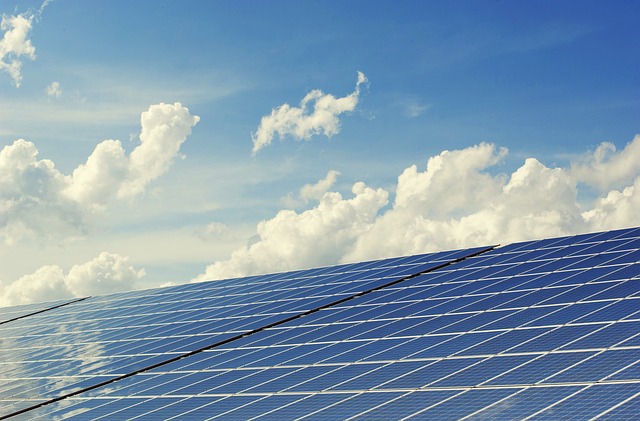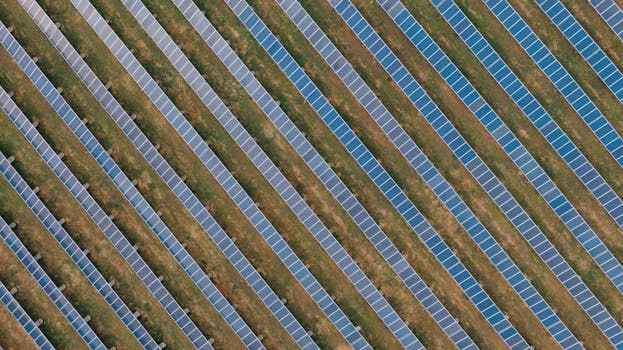“Power Your Future: Choose the Right Wiring for Optimal Solar Performance.”
Choosing the right wiring for your solar panel system is crucial for ensuring optimal performance, safety, and longevity of the installation. The wiring not only facilitates the efficient transfer of electricity generated by the solar panels to the inverter and ultimately to the electrical grid or battery storage but also impacts the overall efficiency and reliability of the system. Factors such as wire gauge, material, insulation type, and environmental conditions must be carefully considered to minimize energy loss, prevent overheating, and withstand external elements. Proper wiring selection is essential for maximizing energy output and ensuring compliance with local electrical codes and standards.
Understanding Wire Gauge for Solar Panel Systems
When it comes to setting up a solar panel system, one of the most critical components to consider is the wiring. The wire gauge you choose can significantly impact the efficiency and safety of your solar energy system. Understanding wire gauge is essential for ensuring that your solar panels operate optimally and that the energy produced is transmitted effectively to your inverter and battery storage, if applicable.
Wire gauge refers to the thickness of the wire, which is measured using the American Wire Gauge (AWG) system. In this system, a lower gauge number indicates a thicker wire, while a higher gauge number signifies a thinner wire. The thickness of the wire is crucial because it determines the amount of current that can safely pass through it without overheating. For solar panel systems, the most commonly used wire gauges range from 10 AWG to 14 AWG, depending on the specific requirements of the installation.
One of the primary factors to consider when selecting the appropriate wire gauge is the distance between the solar panels and the inverter or battery. As electricity travels through a wire, it experiences resistance, which can lead to voltage drop. Voltage drop is the reduction in voltage that occurs as electrical energy moves through the wire, and it can significantly affect the performance of your solar system. To minimize voltage drop, it is advisable to use a thicker wire for longer distances. For instance, if your solar panels are located far from the inverter, opting for a 10 AWG wire instead of a 12 AWG wire can help maintain efficiency by reducing the amount of energy lost during transmission.
In addition to distance, the amount of current your solar panel system will generate also plays a vital role in determining the appropriate wire gauge. The current, measured in amperes (amps), is influenced by the total wattage of your solar panels and the voltage of your system. For example, a 300-watt solar panel operating at 24 volts will produce approximately 12.5 amps. In this case, using a 12 AWG wire would be suitable for short distances, but if the distance increases, you may need to consider a thicker wire to accommodate the higher current and reduce the risk of overheating.
Moreover, environmental factors should not be overlooked when selecting wire gauge. If your solar panel system is installed in an area with extreme temperatures or exposure to moisture, it is essential to choose wires that are rated for such conditions. Using wires with appropriate insulation can help protect against degradation and ensure longevity. Additionally, using UV-resistant wire is crucial for outdoor installations, as prolonged exposure to sunlight can weaken the wire over time.
Ultimately, choosing the right wire gauge for your solar panel system is a decision that should not be taken lightly. It requires careful consideration of various factors, including distance, current, and environmental conditions. By understanding the implications of wire gauge on your solar energy system, you can make informed choices that enhance efficiency and safety. Consulting with a professional installer can also provide valuable insights tailored to your specific setup, ensuring that your solar panel system operates at its best for years to come. In conclusion, investing time in understanding wire gauge will pay off in the long run, as it is a fundamental aspect of a successful solar energy installation.
The Importance of Insulation Types in Solar Wiring

When it comes to setting up a solar panel system, one of the most critical aspects that often goes overlooked is the choice of wiring, particularly the insulation types used. The insulation of the wiring plays a pivotal role in ensuring the efficiency, safety, and longevity of the entire solar energy system. Understanding the various insulation types available can significantly impact the performance of your solar installation, making it essential to choose wisely.
To begin with, the insulation material directly affects the wire’s ability to withstand environmental factors. Solar panel systems are typically installed outdoors, exposed to varying weather conditions, including extreme temperatures, moisture, and UV radiation. Therefore, selecting wiring with appropriate insulation is crucial. For instance, thermoplastic elastomer (TPE) and cross-linked polyethylene (XLPE) are popular choices due to their excellent resistance to heat and UV rays. These materials not only protect the conductive core from degradation but also ensure that the wiring maintains its integrity over time, thereby reducing the risk of system failures.
Moreover, the insulation type influences the wire’s electrical performance. High-quality insulation minimizes energy loss due to resistance, which is particularly important in solar applications where efficiency is paramount. For example, wires with thicker insulation can provide better protection against electrical leakage, ensuring that more of the generated energy is effectively transmitted to the inverter and ultimately to the grid or battery storage. This efficiency translates into higher energy yields and, consequently, a better return on investment for the solar system owner.
In addition to performance and efficiency, safety is another critical consideration when selecting insulation types for solar wiring. Poorly insulated wires can lead to short circuits, overheating, and even fire hazards. Therefore, it is essential to choose insulation materials that meet or exceed industry safety standards. For instance, wires that are rated for direct burial or those that have a flame-retardant property can provide an added layer of safety, particularly in installations where wiring may be exposed to potential physical damage or where there is a risk of fire.
Furthermore, the choice of insulation can also affect the installation process itself. Some insulation types are more flexible and easier to work with, which can simplify the installation process and reduce labor costs. For example, flexible PVC insulation is often favored for its ease of handling and installation, making it a popular choice among installers. On the other hand, while more rigid insulation types may offer superior protection, they can be more challenging to maneuver, potentially leading to increased installation time and costs.
As we consider the long-term implications of wiring choices, it becomes clear that investing in high-quality insulation is not merely a matter of immediate performance but also of future-proofing the solar panel system. By selecting wiring with durable insulation, system owners can mitigate the risks of premature failure and costly repairs, ensuring that their solar investment continues to yield benefits for years to come.
In conclusion, the importance of insulation types in solar wiring cannot be overstated. From enhancing efficiency and safety to facilitating easier installation, the right choice of insulation is fundamental to the overall success of a solar panel system. As the solar industry continues to evolve, staying informed about the best practices in wiring selection will empower system owners to make decisions that optimize their energy production and safeguard their investments.
Comparing Copper vs. Aluminum Wiring for Solar Installations
When it comes to selecting the appropriate wiring for your solar panel system, one of the most critical decisions involves choosing between copper and aluminum wiring. Both materials have their unique advantages and disadvantages, which can significantly impact the efficiency, longevity, and overall performance of your solar installation. Understanding these differences is essential for making an informed choice that aligns with your specific needs and circumstances.
Copper wiring has long been the industry standard for electrical applications, including solar installations. One of its most notable advantages is its superior conductivity. Copper wires can carry more current than aluminum wires of the same gauge, which means they can transmit energy more efficiently. This efficiency translates into less energy loss during transmission, ultimately enhancing the overall performance of your solar system. Additionally, copper is highly resistant to corrosion, which is particularly beneficial in environments where moisture or other corrosive elements may be present. This resistance contributes to the longevity of the wiring, reducing the need for frequent replacements and maintenance.
On the other hand, aluminum wiring presents a compelling alternative, particularly when considering cost-effectiveness. Aluminum is significantly lighter than copper, making it easier to handle and install, especially in large-scale solar projects. Furthermore, aluminum wiring is generally less expensive than its copper counterpart, which can lead to substantial savings, particularly for larger installations. However, it is essential to note that aluminum has a lower conductivity than copper, which means that larger gauge wires are required to carry the same amount of current. This requirement can offset some of the initial cost savings, as larger wires may be more expensive and cumbersome to install.
Another critical factor to consider is the thermal expansion properties of both materials. Aluminum expands and contracts more than copper when subjected to temperature fluctuations. This characteristic can lead to potential issues with connections over time, as the constant expansion and contraction may cause loosening or even failure of the connections. In contrast, copper’s stability in this regard makes it a more reliable choice for long-term installations, particularly in regions with significant temperature variations.
Moreover, the installation environment plays a crucial role in determining the best wiring option. In coastal areas or regions with high humidity, the corrosion resistance of copper may provide a significant advantage. Conversely, in applications where weight is a critical factor, such as rooftop installations, aluminum’s lightweight nature may be more beneficial. Additionally, local building codes and regulations may dictate specific requirements for wiring materials, making it essential to consult with local authorities or a qualified installer before making a final decision.
Ultimately, the choice between copper and aluminum wiring for your solar panel system hinges on a variety of factors, including budget, installation environment, and long-term performance expectations. While copper offers superior conductivity and durability, aluminum provides a cost-effective alternative that may be suitable for specific applications. By carefully weighing these considerations and consulting with professionals in the field, you can make an informed decision that ensures the efficiency and reliability of your solar energy system for years to come. In conclusion, understanding the nuances of copper and aluminum wiring will empower you to choose the right option for your solar installation, paving the way for a successful transition to renewable energy.
Best Practices for Wiring Layout in Solar Panel Systems
When it comes to setting up a solar panel system, the wiring layout is a critical component that can significantly impact the overall efficiency and safety of the installation. Understanding the best practices for wiring layout is essential for both DIY enthusiasts and professional installers alike. To begin with, it is important to recognize that the wiring must be appropriately sized to handle the current produced by the solar panels. This means selecting wires that can accommodate the maximum output of the system while minimizing voltage drop. A common rule of thumb is to keep voltage drop below 3% to ensure optimal performance.
In addition to wire sizing, the layout of the wiring should be carefully planned to avoid unnecessary complications. For instance, it is advisable to keep the wiring runs as short as possible. Shorter runs reduce resistance and, consequently, energy loss. Moreover, minimizing the distance between the solar panels and the inverter can enhance efficiency, as longer runs can lead to increased voltage drop and potential overheating of the wires. Therefore, when designing the layout, consider the placement of both the solar panels and the inverter to create a streamlined path for the wiring.
Furthermore, using high-quality materials is paramount in ensuring the longevity and reliability of the wiring system. Opting for UV-resistant and weatherproof cables is essential, especially for outdoor installations where exposure to the elements can lead to degradation over time. Additionally, using connectors that are rated for outdoor use can prevent corrosion and ensure a secure connection, which is vital for maintaining the integrity of the system. It is also wise to use a combination of different wire types, such as THHN for indoor applications and PV wire for outdoor use, to optimize performance based on the specific environment.
As you plan the wiring layout, it is crucial to adhere to local electrical codes and regulations. These codes are designed to ensure safety and efficiency, and compliance is not only a legal requirement but also a best practice that can prevent potential hazards. Consulting with a licensed electrician or a solar installation professional can provide valuable insights into the specific requirements for your area, ensuring that your system is both safe and compliant.
Moreover, incorporating proper grounding techniques into your wiring layout is essential for protecting the system from electrical surges and lightning strikes. Grounding provides a safe path for excess electricity to dissipate, thereby safeguarding both the solar panels and the inverter. It is advisable to use a dedicated grounding wire and to connect it to a grounding rod that is properly installed in accordance with local codes.
In addition to these technical considerations, it is also beneficial to document the wiring layout thoroughly. Creating a detailed schematic can aid in future maintenance and troubleshooting, allowing for quick identification of any issues that may arise. This documentation should include information on wire sizes, lengths, and connections, providing a comprehensive overview of the system.
In conclusion, choosing the right wiring for your solar panel system involves careful consideration of wire sizing, layout, material quality, compliance with regulations, grounding techniques, and thorough documentation. By following these best practices, you can ensure that your solar installation operates efficiently and safely, maximizing the benefits of harnessing solar energy for your home or business. Ultimately, a well-planned wiring layout not only enhances performance but also contributes to the longevity and reliability of your solar panel system.
Q&A
1. **Question:** What type of wire is recommended for solar panel systems?
**Answer:** Use UV-resistant, stranded copper wire, typically rated for at least 90°C, such as THHN or USE-2.
2. **Question:** How do I determine the appropriate wire gauge for my solar panel system?
**Answer:** Use the American Wire Gauge (AWG) chart and consider the total current, distance from the panels to the inverter, and acceptable voltage drop (generally under 3%).
3. **Question:** Should I use single or multi-strand wire for my solar installation?
**Answer:** Multi-strand wire is preferred for flexibility and ease of installation, especially in tight spaces or when bending is required.
4. **Question:** What factors should I consider when selecting wire insulation for solar applications?
**Answer:** Consider temperature rating, UV resistance, moisture resistance, and compatibility with the installation environment (e.g., direct burial or conduit).
Conclusion
Choosing the right wiring for your solar panel system is crucial for ensuring optimal performance, safety, and longevity. Factors such as wire gauge, material, insulation type, and environmental conditions must be carefully considered to minimize energy loss and prevent overheating. Properly sized and rated wiring not only enhances efficiency but also complies with local electrical codes and standards. Ultimately, investing time in selecting the appropriate wiring will lead to a more reliable and effective solar energy system.




